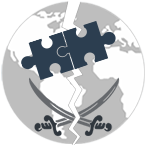The Rubin Centre, an Israeli think-tank reporting on modern Middle East affairs, has published an article looks at some of the relationships between Iran and the Global Muslim Brotherhood. The article begins:
This article focuses on relations between the Islamic Republic of Iran and branches of the Muslim Brotherhood in the Arabic-speaking Middle East. The introduction looks at the historical and ideological background to relations between the Brotherhood and Iran. The article then focuses on two examples – relations between Teheran and the Palestinian Hamas movement, and Iran’s relations to the Jama’a al-Islamiyya, the Lebanese branch of the Brotherhood. Also surveyed are Iranian relations with a number of other smaller regional branches of the Brotherhood.
INTRODUCTION
Historically, Iran has regarded the Muslim Brotherhood as a friendly organization. The Brotherhood, for its part, has strived to establish a regime close to the principles of the Islamic Republic of Iran. The Iranian theocracy cherishes its image as a republic with popular representation and elections (albeit very limited and under the total control of the Supreme Leader). Iran makes skillful and manipulative use of this aspect of its theocratic Shi’i rule to subvert Arab countries.
While neither the Islamic Republic nor the Brotherhood support democracy in the Western sense of the term, an element of popular representation–and thus legitimacy–is important for both. Thus, Iran and the Muslim Brotherhood can find common ideological ground. Initially, the Muslim Brotherhood of Egypt supported the Iranian Islamic Revolution. This too is remembered in Tehran.
From the Iranian perspective, it is important to note that the ongoing regional sectarian conflict between Shi’a and Sunnis is not considered inevitable, or desirable.[1] Nevertheless, the reality of this conflict has limited the possibility of cooperation between Teheran and the Brotherhood.
The links between Iran and the Muslim Brotherhood are long standing. The first religiously motivated terrorist movement in Iran, Fadayan-e Islam, under the leadership of Navob Safavi, was inspired by the example of the Egyptian Muslim Brotherhood and its leader Sayyid Qutb. In the past, the Egyptian Muslim Brotherhood supported the principle of unity between Shi’a and Sunnis, which was called ‘rapprochement of the schools’ or taqrib al-madhahib. Many Iranian Shi’i activists, such as prominent Iranian religious activist Hadi Khosrowshahi,[2] maintain this view of the situation.
Iran is fully aware of the regional problems complicating the regime’s cooperation with the Muslim Brotherhood. As a result, the republic does not have a unified, clear, and coherent policy with regard to the group. Iranian calculus with respect to the Brotherhood has never been publicly discussed. One cannot say that the Iranian stance on the Brotherhood is as easily assessed as Iran’s stance on Israel or Syria, for example.
Read the rest here.
The GMBDW reported in November 2015 that Hamas and the Iranian-backed Hezbollah had met in Beirut Lebanon to discuss issues such as the Islamic State (ISIS) as well as the situation in the Palestinian territories.
